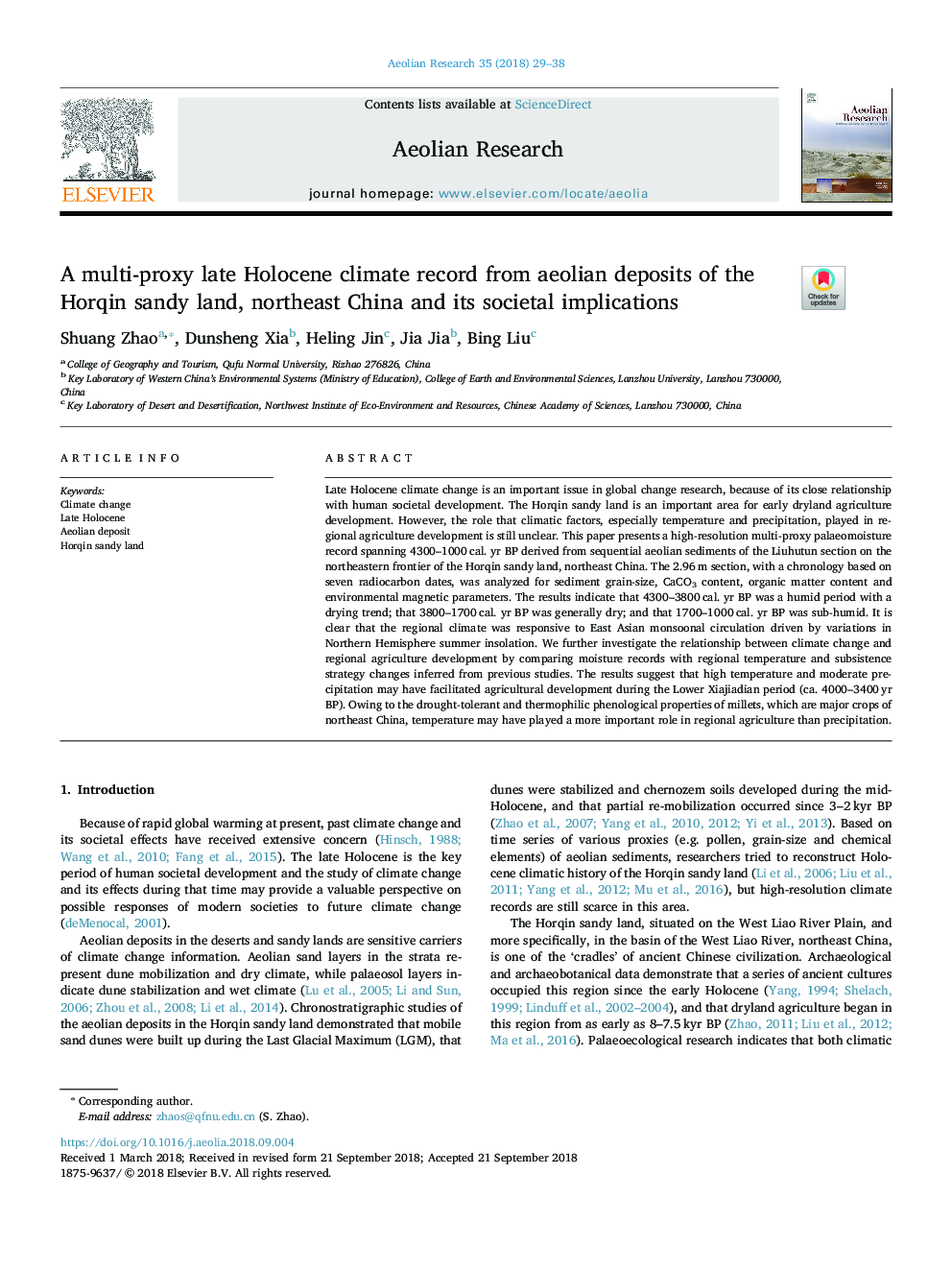| Article ID | Journal | Published Year | Pages | File Type |
|---|---|---|---|---|
| 11028528 | Aeolian Research | 2018 | 10 Pages |
Abstract
Late Holocene climate change is an important issue in global change research, because of its close relationship with human societal development. The Horqin sandy land is an important area for early dryland agriculture development. However, the role that climatic factors, especially temperature and precipitation, played in regional agriculture development is still unclear. This paper presents a high-resolution multi-proxy palaeomoisture record spanning 4300-1000â¯cal. yr BP derived from sequential aeolian sediments of the Liuhutun section on the northeastern frontier of the Horqin sandy land, northeast China. The 2.96â¯m section, with a chronology based on seven radiocarbon dates, was analyzed for sediment grain-size, CaCO3 content, organic matter content and environmental magnetic parameters. The results indicate that 4300-3800â¯cal. yr BP was a humid period with a drying trend; that 3800-1700â¯cal. yr BP was generally dry; and that 1700-1000â¯cal. yr BP was sub-humid. It is clear that the regional climate was responsive to East Asian monsoonal circulation driven by variations in Northern Hemisphere summer insolation. We further investigate the relationship between climate change and regional agriculture development by comparing moisture records with regional temperature and subsistence strategy changes inferred from previous studies. The results suggest that high temperature and moderate precipitation may have facilitated agricultural development during the Lower Xiajiadian period (ca. 4000-3400â¯yr BP). Owing to the drought-tolerant and thermophilic phenological properties of millets, which are major crops of northeast China, temperature may have played a more important role in regional agriculture than precipitation.
Related Topics
Physical Sciences and Engineering
Earth and Planetary Sciences
Atmospheric Science
Authors
Shuang Zhao, Dunsheng Xia, Heling Jin, Jia Jia, Bing Liu,
